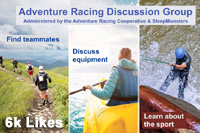A Practical Guide to Safe and Successful Racing at High Altitude
Rob Howard / 20.10.2014

Occasionally races take place at high altitudes and while there is plenty of advice available on the web for racing and training at altitude, some of it is conflicting, and much of it highly technical, being the results of medical research projects. Here I want to provide plain English advice, based on practical experience and with more emphasis on competing at altitude and mental preparation.
I’ll start with the disclaimer, I’m not medically trained and the suggestions given here are a personal opinion and should be viewed as such. Anyone racing at high altitude should do their own research, follow medical advice, independent and/or provided by event medics, and ultimately be responsible for their own wellbeing. (To put it bluntly - the vast majority of problems occur due to the ignorance and wilful behaviour of the sufferer.)
My experience has come from many extended trips to altitude, and primarily from helping to organise the Everest Marathon for many years. This was a ground breaking event when we started it in 1987 and I still have the newspaper cuttings saying we were irresponsible and implying everyone was going to die. (The principal organiser telling The Telegraph that if the worst did happen we wouldn’t bring the bodies back and that a priest taking part had chosen his funeral hymn wasn’t a wise PR move!) Everyone was fine and the race was a great success and has continued to this day, raising millions of pounds for Nepalese charities. See www.everestmarathon.org.uk for more information.
I lead many trips to Gorak Shep in Nepal (5184m), where the race starts (and higher for acclimatisation purposes) being responsible for groups of up to 40 competitors and working with dozens of experienced medics, some of them carrying out studies on the athletes adaption to altitude. As a result I’ve closely supervised and studied many hundreds of racers at extreme altitude and worked with experts in the field of attitude medicine in practice, at altitude. I’ve also carried very ill patients to lower altitudes overnight, and suffered altitude sickness myself.
What it ‘altitude sickness’?
‘Altitude sickness’ is a general term for the symptoms experienced as a result of the reduced level of oxygen in the atmosphere at higher altitudes. (We advised competitors that at the start of the Everest Marathon their bodies were working on approximately 50% of the oxygen they’d have at sea level.) This results in various adverse reactions if the body is not slowly acclimatised to the change in oxygen levels. (You might come across the medical term Hypoxia, which means a lack of oxygen to the body.)






 SleepMonsters
SleepMonsters



